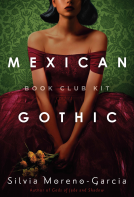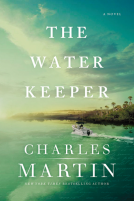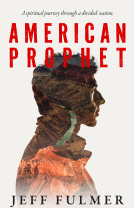
Herbarium
The Quest to Preserve and Classify the World's Plants
by Barbara M. Thiers
This title was previously available on NetGalley and is now archived.
Send NetGalley books directly to your Kindle or Kindle app
1
To read on a Kindle or Kindle app, please add kindle@netgalley.com as an approved email address to receive files in your Amazon account. Click here for step-by-step instructions.
2
Also find your Kindle email address within your Amazon account, and enter it here.
Pub Date Dec 08 2020 | Archive Date Feb 24 2021
Talking about this book? Use #Herbarium #NetGalley. More hashtag tips!
Description
“A sweeping history of the origins, development, and future of herbaria and their role in plant consternation.” —The American Gardener
Since the 1500s, scientists have documented the plants and fungi that grew around them, organizing the specimens into collections. Known as herbaria, these archives helped give rise to botany as its own scientific endeavor.
Herbarium is a fascinating enquiry into this unique field of plant biology, exploring how herbaria emerged and have changed over time, who promoted and contributed to them, and why they remain such an important source of data for their new role: understanding how the world’s flora is changing. Barbara Thiers, director of the William and Lynda Steere Herbarium at the New York Botanical Garden, also explains how recent innovations that allow us to see things at both the molecular level and on a global scale can be applied to herbaria specimens, helping us address some of the most critical problems facing the world today.
Available Editions
| EDITION | Other Format |
| ISBN | 9781604699302 |
| PRICE | $40.00 (USD) |
| PAGES | 304 |
Average rating from 57 members
Featured Reviews
A very detailed book on herbaria, which is something I never knew about before. Full of drawings and photos, history, stories, and explanations. I admit to being a bit intimidated, as botany is not something I truly understand. The historical accounts and stories were fun and interesting to learn about. It’s not a quick read but something to give time and attention in order to truly get the best of it.
 Evalina I, Reviewer
Evalina I, Reviewer
This is an impressive reference book. It contains a lot of information on the history of botanists and explorers who have studied and classified various plants throughout history. It would make a great gift for the enthusiast or professional with interest in the topic.
I voluntarily reviewed an Advanced Reader Copy of this book provided by the publisher and Net Galley. However, the thoughts expressed are totally my own.
 Esther L, Reviewer
Esther L, Reviewer
This book is a fascinating and in-depth exploration of herbaria, with historical context. With numerous photos and scanned pages from the New York Botanical Garden, it's a perfect introduction to the herbarium adventure. It's also a useful reference book that has inspired me to delve deeper.
*This book was received as an Advanced Reader's copy from NetGalley.
So, you have to really, really like plants to read this book. And I mean that in a good way. I like plants a lot, and it still came as a surprise to me what a herbarium actually was (I'm almost ashamed to admit I thought pressing flowers was just for fun and decoration). Or how many herbariums they are and what scientific progress they have helped make. This book covers that.
Written textbook style, but with plenty of illustrations and photographs to break up the monotony, this book covers the historical significance of herbariums, modern uses and threats, and how you can help or get involved in the work. While it can get a bit dry at times, it was still incredibly interesting to see the depth the collections covered and how many areas in the world had their own herbariums along with the sheer amount of specimens collected and stored. There was also brief touches on the experiments being run with DNA and herbarium specimens, which I found fascinating.
Great for a plant and science lover, this is one of those books that if you really like to study (or are in this line of work) you should probably pick up.
Review by M. Reynard 2020
This was a really beautiful volume and carried the same kind of historical science of other books that explain how things came to be called, not just what they are called. Obviously those with an interest in biological sciences would enjoy it, but I can actually envision gardeners, casual environmentalists, and anyone who cares about preserving undiscovered plant species would also really find this interesting.
An in-depth history of herbaria and plants. It is an interesting read, but I believe you need to be really interested in the subject to enjoy it and get the most out of it. This book gives a great overview of herbaria around the globe, All the famous herbaria, plants, and scientists are in this book, from Linnaeus to Lewis and Clark. I can fully understand the author has had a hard time choosing what to keep and what to cut out of the book. Not an easy task.
There are alot of interesting facts in this book, but I found it to have a bit too many pictures, and at times it went a bit too much into a subject that I think could have been given less space. I am however not an expert in this subject, just an interested observer, so I might not fully understand if something is superbly important. In any case, it’s a great reference book when it comes to herbaria around the world, and the history and science behind plants and where we stand now. My favorite part was the descriptions of herbaria in different countries like South Africa and Brazil.
The Herbarium is a beautifully illustrated and highly interesting book exploring the cataloguing of plant species and the establishment of the botanical gardens and research centres around the globe. The text follows a chronological development of the herbaria ‘explorers’ / gatherers from Europe, North America and other areas of the globe from the 1600s and onwards cataloguing their exploits and to some extent their desire to be the first to find new and elusive plants. To what extent this resulted in terrible exploitation and the colonialism of countries is not fully explored.The stories of individuals don’t hold back from revealing the true characters of the key figures in the establishment of Herbarium. B M Thiers has presented a detailed biography highlighting the breadth and depth of research. The text is written in an academic style but is extremely accessible. The final section looking at the future and the link to the wedigbio group was useful and thought provoking. Although not a criticism, it would have been interesting to see in more depth how the role of herbarium could further support the challenges that await plant earth in the future. An excellent book that would be recommended to all with a love of plants and the history of much that we take for granted all around us.
Oh joy and delight of my heart! This is a wonderful book, especially if - like me - you love plants.
It contains a bit of everything, from history and historical significance to the importance of plant preservation, spiced up with magnificent illustrations and photographs.
Highly recommend it if you are a plant lover or if you want to know a bit more about the significance and importance of these incredible treasures.
Many (many!) thanks to Timber Press, Net Galley, and Barbara M. Thiers for my ARC.
I love gardening. It might be the ultimate girly cliche, but it’s true! I love trying to grow them, and I always try to keep plants and flowers in the house. So naturally, I loved the gorgeous art in this book as much as I enjoyed learning about herbaria. It was incredibly interesting to see the ways vegetation has evolved and changed over the centuries...Amazing that samples of the past have been recorded and contrasted against modern plants in this book! I especially enjoyed the vintage woodcuts and engravings of ancient plants that were included. I received this as a free e-book but I would be very proud to display this on my shelves.
 becky w, Librarian
becky w, Librarian
Barbara M. Thiers has written a comprehensive account of plant preservation and conservation. Historical details on botanists from early explorers to modern day plant collectors with an emphasis on methods of preservation of specimens is presented for scientists, conservationists and novice gardeners. I especially enjoyed the sections on different countries and brave women botanists. While I am a huge proponent of ecologically collecting plants, “take nothing leave nothing”, these groundbreaking plant collecting pioneers discovered remedies for medicine among other important uses for plants while also preserving specimens of currently extinct or endangered plants. Modern botanists are now able to study these preserved specimens at many of the botanical and herbarium institutions mentioned in this book, while also giving us insight into a field of scientists saving many plant species from loss due to weather, environment or destructive actions by humans. This book is not a fast read, however most books with this much detail are often to be read slowly or referred to as research. Recommended for scientists, gardeners and students of botany. They will definitely find it worthwhile. Thank you NetGalley and the publisher for this ARC.
READING PROGRESS
An interesting book full of history and information, and with beautiful pictures. An in-depth reference book that is perfect for anyone who wants to study the subject, with detailed information from around the world. Perhaps a bit lengthy for beginners or anyone with a passing interest, but an essential book for those who love botany or work in the profession.
Many thanks to NetGalley and the publisher for the ARC of this book.
 Denice L, Reviewer
Denice L, Reviewer
A walk is not truly lived unless you take a group of children with you to investigate any and all plant life found along the path. The illustrations in this book are beautifully rendered to be used for identity purposes. They are not the stylized pictures used to decorate your kitchen, although many could easily replace them. We took gathering tools and envelopes on our walks...yes, one walk was not enough for our investigating...brought them back to the porch and spent many hours matching them to the book's pictures and learning so much more about the world around us. Any age group would enjoy this book. Just remember, the best way to enjoy it is to share with someone you love.
Herbarium is a comprehensive reference of the history and development of botanical nomenclature as related by botanist Barbara M. Thiers. Due out 24th Nov 2020 from Workman Publishing on their Timber Press imprint, it's 304 pages and will be available in hardcover and ebook formats.
The cataloguing and organization of plant material into a cohesive (and correctly identified) herbarium is admittedly exotic, academic, and (some would say) tweedy pastime. It's also deeply steeped in adventure, history, (yes colonialism), and exploration. Early explorers were hardy and fearless and raced to find and bring back heretofore unknown species. As a result, botanical material was crated and shipped wholesale (generally unidentified) back to be bought and curated into private and public collections worldwide.
This is the story of those collectors, the materials they brought back, the people who curate(d) and maintain(ed) them, conservation, and more. The book is arranged roughly chronologically and geographically: origins, the age of botanical exploration, herbaria in the US, herbaria in the wider world, and the important future of herbaria given the uncertainties of the world today. The author has an engaging writing style, both academically rigorous and layman accessible. I can easily imagine that she's a capable lecturer.
The book is -beautifully- illustrated throughout with mounted specimens shown in situ with their accession entries. It's very much like a museum trip in the reader's hands as well as containing abundant drawings and illustrations. I work in a healthcare setting in a laboratory (cancer biopsies mostly), but seeing the photographs of their labs with climate controlled storage and rooms full of files of plant material made my bionerd-y heart sing.
There is an abbreviated resource and bibliography list for further reading, a links and informational list of worldwide botanical collections, as well as a comprehensive cross-referenced index.
It's an admittedly niche book, but I heartily recommend it to readers who enjoy academic collections and who really enjoy seeing huge collections of *stuff* being arranged and catalogued and ordered. Beautifully done and well illustrated. Five stars.
Disclosure: I received an ARC at no cost from the author/publisher for review purposes.
Along with breathtaking imprints, maps, photographs and illustrations, Barbara Thiers details the history of herbaria and their many roles in the world from 1500 to the present. As a master gardener and forager thirsting to learn more, this title hooked me immediately.
International trade has always been important but from 1500 on interest in adding new plant and species and spices developed and grew. Transportation on ships made this possible, especially with the invention of Wardian cases which preserved specimens.
Thiers focuses on various explorers and botanists, some famous and some lesser known, and their contributions from collecting to categorizing to nomenclature to preserving. The meticulous preserving processes used then and now from papers to glues to presses intrigue me very much. I had no idea there were so many herbaria in the world, though I have visited a few.
It seems many medical doctors centuries ago became botanists. One of my favourite stories in the book is about a man, Dampier, who not only documented and collected plants but also described nature including land, animals and water currents in wonderful detail. Another story which stands out is the rescue of pressed plants from a burning building by a passionate female botanist.
Contemporary topics are discussed as well such as the environment, invasive species, pathogens, pollution, interesting fungi
and agriculture.
This book is extremely detailed and niche so obviously isn't geared for those with only a passing interest in plants and/or fungi. It's more suited to those with a deeper scientific interest in this specific subject. I enjoyed it very much!
My sincere thank you to Timber Press and NetGalley for providing me with an ARC of this enthralling book.
 Adie H, Reviewer
Adie H, Reviewer
This is a very interesting glimpse into the history of herbaria, from their first beginnings to the state of botanical study today. I was expecting a little more information about the contents of the herbaria - how are they organised? who would have used them? - and while this kind of information is touched upon, the book spends far more time on the history of individual botanists and their collections, which still turned out to be very interesting. I enjoyed seeing all the inset photographs of specimens, too. Not a book to read in one go, but something to be dipped into and savoured as a history book.
 Annie L, Reviewer
Annie L, Reviewer
A truly facinating Book for any one who adores & loves Plants & all the amazing natural Medicines they have & can still provide us with.
I take my Hats off to all those Brave ,some times Fool Hardy explorers who charted unknown waters sometimes as the case with Dampier a very poor Vessel in which to make those Journey's in cramped conditions for both the men who sailed on the vessel & the "specimens they were carrying.
Plants we now take for granted & the sometimes Life saving medicines they provide us with ,were hard come by over the years by these intrepid people .
How ever some need to apologise for the destruction they caused such as the Aztec Libraries which contained 1000's of Manuscripts of Herbs & which were wiped out by the European Conquestador's.
So it proves one of our most imported resources has been exploited since man started to develop his so called intelligence , I do hope we will stop this now ! This is a truly amazing Book to read , for Historical interest, People , Plants & many other area's of life , we can all learn from this Book.#Netgalley#GoodReads#Amazon.co.uk#instagram, <img src="https://www.netgalley.com/badge/11bc11d0026952991f96874534f30a6fb6dbed74" width="80" height="80" alt="25 Book Reviews" title="25 Book Reviews"/>,<img src="https://www.netgalley.com/badge/ef856e6ce35e6d2d729539aa1808a5fb4326a415" width="80" height="80" alt="Reviews Published" title="Reviews Published"/>,<img src="https://www.netgalley.com/badge/aa60c7e77cc330186f26ea1f647542df8af8326a" width="80" height="80" alt="Professional Reader" title="Professional Reader"/>
I'm aware that I give a lot of five stars, but in the case of this book, I learnt SO MUCH that it deserves it.
I am a brand new Horticulture student and I had no idea about any of this when I first expressed interest in this book. Now I know so much more, including about my own country. The Australian section in this is truly great and to put a couple of things into context, I actually live in a suburb called Banksia, near Botany Bay (Kamay) in NSW, as well as being obsessed with Australian natives. Hugely informative and endlessly interesting, I may have found a new life's work, just because I read this book. No joke, I want to combine my expert typing skills with Horticulture. I'm needed!
Plus Ms Thiers doesn't shirk feminist history here. She includes all your male colonist adventurers who stole your favourite plant, plus the women that changed this world. A few weeks ago, I read a review for Jeanne Baret, the first woman to circumnavigate the globe, who has all been ignored until now. That will hopefully be my next read.
Possibly the only aspect I would've liked to see would be a few more Indigenous names for plants included, especially Australian, as well as Indigenous use for those plants, if any. Plant collection is so very colonist at heart, yet will possibly be the thing that saves Indigenous plants. I am aware that this was not the point of the exercise, but it could've added to it in so many ways.
#Herbarium #NetGalley
 Reviewer 610591
Reviewer 610591
Barbara M. Theirs'' new book, Herbarium, is a truly lovely, full of detailed photos and copies of documents from botanical societies and Herbaria. A herbarium, for those who may not be aware, is a collection of preserved plant specimens, which have been preserved for scientific study and classification. Most plants are pressed and dried on flat sheets of paper, which were often bound into books in the early days of plant collection (16th century.)
After drying, these specimens were labeled with all kinds of information about the plant - where it was collected, time and date, growing conditions, et cetera.
Thiers outlines the history of such plant collection and collation by scientists and explorers and leads the reader to the importance of such collections in the present day, where botanists and other scientists are able to compare today's plants and their habitats to what they looked like and were they grew in the past. Work goes on even today; I was interested in this book primarily because my daughter volunteered at a herbarium and spent a lot of time cataloging plant samples. It's nice to know that she's now part of that scientific chain and has contributed to our ongoing learning, even if only in a small way.
 Cherie A, Reviewer
Cherie A, Reviewer
A treasure for botanists, history buffs and artists. This book tells the story of the early explorers in the field and their efforts to learn and expand their knowledge. It is well organized, with extensive photos of important people and their work. I enjoyed looking through it, it is a significant and well-written reference work and while I read sections of particular interest it is a book to keep on your virtual shelf to dip into as questions are raised or an impulse strikes. I received an uncorrected galley of this book for review.
Comprehensive, incredibly readable, extremely interesting. I learned so much about herbariums and plants and the history of our quest to discover their healing powers.
I was completely enthralled by this book. I had no expectations going into it. I saw the cover, read the title, and knew this book was going to be for me. As a former botany student, I was very interested in the history of herbaria and plant collections. This book is written in a reader friendly format and filled with beautiful photographs and digitized herbaria specimens that guide you through history. Although this book might not be for everyone, I highly recommend it for anyone who truly loves plants and nature.
This has been such a fascinating read!
There is so much history here, and so much adventure in the pages of a book documenting the story of herbaria - how we got to collet plants and keep information about them. It's a long history, which the author presents beautifully, focusing on important characters and actual heroes that built herbariums and studied plants, fungi & co.
But more than the history of herbaria, this book is truly encompassing, with every detail one needs to know about it: why it is important, what great treasure trove of information it provides, what are the challenges they encounter and so much more.
A book perfect for people interested in the world of plants but also for anyone looking to read little know history or simply looking for inspiration. A wonderful read!
A herbarium is a repository of preserved specimens from our world’s plants, fungi and other organisms. First created by Renaissance scholar Luca Ghini, today they number more than 3,300 in more than 170 countries across the world, together they house nearly 390 million examples of what grows on planet Earth. Author Barbara M. Thiers is director of the William and Lynda Steere Herbarium at the New York Botanical Garden, president of the Society for the Preservation of Natural History Collections, and vice president of the Natural Science Collections Alliance.
She has put together a sublime collection of specimens creating not only a fascinating read but one accompanied by complementary pictures of pressed flowers and plant life. Simply stuffed with history of herbaria, statistics, facts and interesting anecdotes, this is a must-read for those who appreciate the natural world and its importance in keeping this planet habitable for human beings. It explores those who first began compiling herbarium, those who furthered their use as well as the science and industry that has moved them forward. Highly recommended.
 Jennifer L, Librarian
Jennifer L, Librarian
This is an interesting book that fans of nature and gardening will enjoy. Would be a great addition to an environmental themed book club.
 Reviewer 543986
Reviewer 543986
Beautiful book, great pictures. Loved reading in this in depth history of herbaria book. For everybody with an interest in biological science.
a wealth of information to get through. I was unfortunately unable to read all since it was through the app and on my phone. however, would be fantastic as a coffee table book/reference book.
 Renee S, Reviewer
Renee S, Reviewer
I thought this was a great book on the history of herbaria with color plates mixed in the pages. It was fascinating to read how old explorations for commerce and nature expeditions resulted in so much information for the world about botany today.
The pictures of the explorers, maps, colored photographs of specimens and locations, as well as historical illustrated botanical plates all add to the great reading of this book. The chapter Herbarium Digitization was a fascinating read on how digitizing and modernizing collections help researchers worldwide.
A truly excellent read for anyone into botany. While it is a little on the academic side, the pictures break up the text and people interested in biographies and history would find this a great book to read and to add to their library collection.
This book was reviewed for my garden blog.
** Than k you NetGalley for providing a digital copy of this book for review**
This is an incredibly comprehensive book on plant biology, and the collection and organization of plants. The pictures are absolutely stunning and the text is incredibly detailed. The history in this book is fascinating if you are a lover of the plant world and especially if you enjoy collecting and pressing plants and flowers. I feel like I need to see a physical copy of this book, as the photographs were just beautiful.
 Juli R, Reviewer
Juli R, Reviewer
This beautifully illustrated book is an absolute treasure of a resource! Full of detail and explanation, 'Herbarium' is a resource for those confident in nature and those, like me, who are still getting used to their green fingers. I also really enjoyed getting to find out more about the field (ha!) itself, the traditions within botany and the people that made big changes to the field's practices. Obviously an interest in plants and nature is a bit of a pre-requisite, but even for those with only a cursory interest, this will be stunning!
An extensive and well researched look into the history of herbariums. The book provides a lot of wonderful images and examples of many things discussed in the text. As interesting as the text is though, it does feel more like reading a textbook and can feel a tad boring at times. Overall if you are interested at all in herbariums this is a go to book for a one stop shop on all the history behind them.
 Charity H, Reviewer
Charity H, Reviewer
It is well designed and interesting read. It is informative as it is written by the director of the William and Lynda Steere Herbarium at the New York Botanical Garden. The information and details are perfect for this book. This book might not be for everyone though. Yet, if you are interested in plants and exploring this field then it is an ideal read. You will learn so much and enjoy the scientific journey. If you aren't that interested then it might be a bit overwhelming while it is historical and filled with beautiful photos and illustrations. It is much like a textbook, if you are interested in the study then pick up this book with wonderful detail including the history and collecting of plants. Take your time with this one and soak in the knowledge.
 Anne M, Educator
Anne M, Educator
Lovely volume the details the history of herbaria. If you are interested in plants and plant collecting, you will love this book!
Readers who liked this book also liked:
Silvia Moreno-Garcia
Historical Fiction, Literary Fiction, Sci Fi & Fantasy
Jeff Fulmer
General Fiction (Adult), Politics & Current Affairs, Religion & Spirituality


















